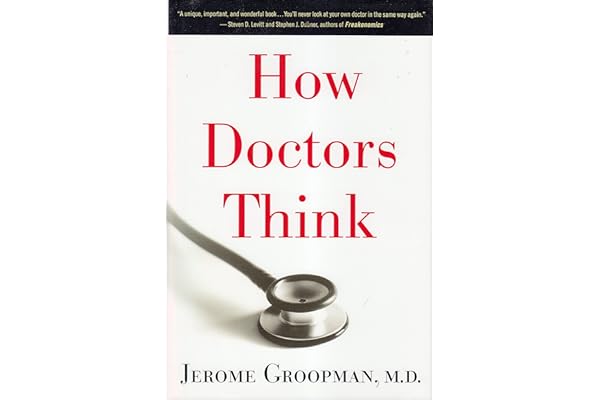Summary:
In “How Doctors Think,” Jerome Groopman explores the thought process and decision-making of doctors, highlighting the potential flaws and biases that can affect their diagnoses. Through real-life examples and interviews with medical professionals, Groopman delves into ways that doctors can improve their critical thinking and ultimately provide better care for their patients.
Book Genre:
Non-fiction, medical, psychology
Main Topic of the Book:
The book primarily revolves around the thought process of doctors and how it can impact their diagnoses and treatment of patients.
Key Ideas:
- Doctors are not infallible, and their thinking can be influenced by various factors such as personal bias, emotions, and external pressures.
- Effective communication and listening are crucial for doctors to gain a thorough understanding of their patients’ concerns and symptoms.
- Doctors should constantly question their assumptions and consider alternative diagnoses, even if it goes against their initial instincts.
- Collaboration and open-mindedness can lead to better diagnoses and treatment plans.
- The importance of empathy and understanding in the doctor-patient relationship.
Main Parts of the Book:
- Introduction: Groopman sets the stage for the book by sharing the story of a misdiagnosis he received and how it sparked his interest in understanding how doctors think.
- Part One: How Doctors Think: the Basics: This section explores the common flaws and biases that can impact doctors’ thinking, including anchoring bias, overconfidence, and premature closure.
- Part Two: Clinical Uncertainty: Here, Groopman delves into the grey area of medicine, where there is no clear answer or diagnosis. He discusses the challenges and potential solutions for dealing with uncertainty.
- Part Three: Medical Mindreading: This section focuses on the importance of communication and how it can impact diagnoses. Groopman also discusses the role of intuition and gut feelings in doctors’ decision-making.
- Part Four: Culture and Medicine: In this section, Groopman explores how cultural beliefs and biases can affect doctors’ thinking and how cultural competence can lead to better care for patients.
- Part Five: How Doctors and Patients Think Together: The final section emphasizes the importance of a strong doctor-patient relationship and how it can positively impact both parties’ thinking and overall outcomes.
Key Takeaways:
- Doctors are not immune to biases and can make mistakes, which can lead to medical errors.
- The doctor-patient relationship plays a crucial role in effective communication, understanding, and ultimately better diagnoses and treatment.
- Collaboration and open-mindedness are essential for doctors to overcome their biases and provide the best care for their patients.
- Doctors should always remain curious and question their assumptions.
- Effective communication and empathy are integral to improving medical care.
Author’s Background and Qualifications:
Jerome Groopman is an American physician, scientist, and author. He is a professor of medicine at Harvard Medical School and a staff writer for The New Yorker. With over 30 years of experience in medicine, he has written several acclaimed books, including “The Anatomy of Hope” and “How Doctors Think.”
Target Audience:
This book is suitable for anyone interested in understanding the dynamics of the doctor-patient relationship and the importance of critical thinking in medical care. It can also be useful for medical professionals who want to improve their decision-making skills and provide better care for their patients.
Publisher and First Publication Date:
“How Doctors Think” was published by Houghton Mifflin Company and first released in March 2007.

